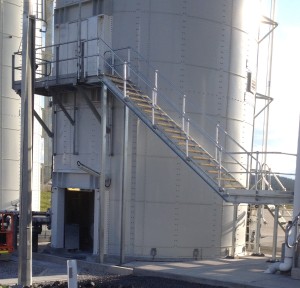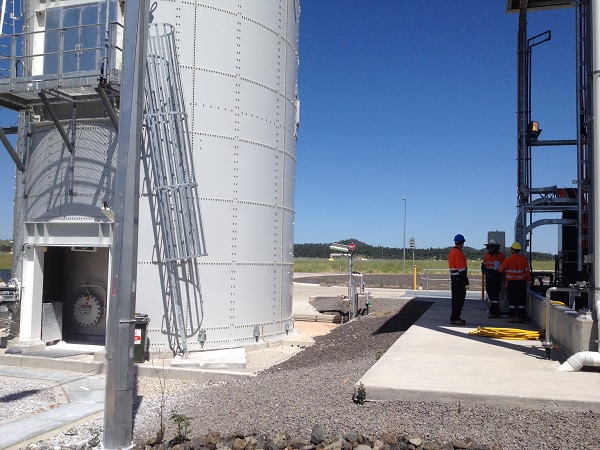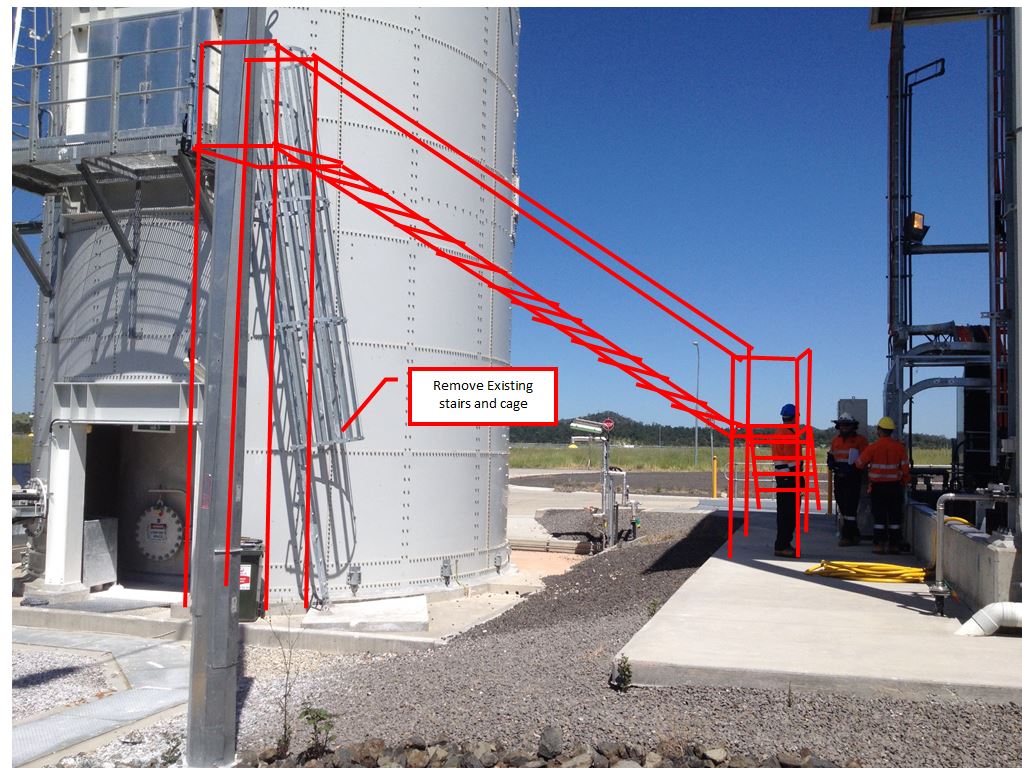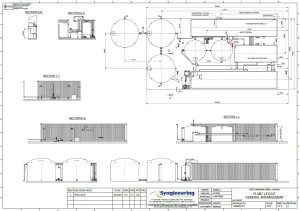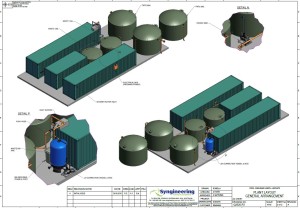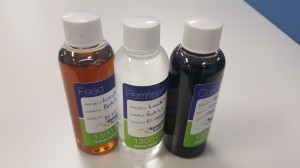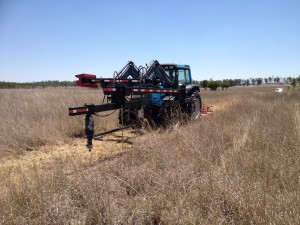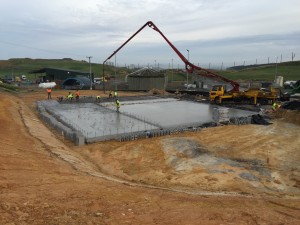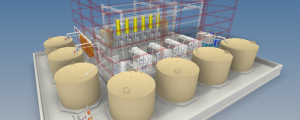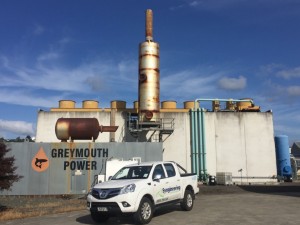Structural Engineering Audits
Written on October 20, 2016
Engineering Audits & Inspections
Engineering audits and engineering inspections are an integral part of both new projects on site and ongoing operations. They are an exercise in benchmarking to assess and understand what is currently in place and quantifying this through reporting. They can identify areas where corrective actions may be required to achieve compliance, or where improvements would provide a benefit to the client. Engineering audits and engineering inspections are tools that can also be used to determine if a project was installed in accordance with the original designs, and provide an accurate starting point for future projects. They can also be an opportunity to have an independent set of eyes review the situation and provide an informed assessment.
For more information – Syngineering Structural Audits
Comparing MBR & SBR Technologies
Written on October 17, 2016
While there are similarities between MBR and SBR (both are forms of the activated sludge process), there is one fundamental difference – the method of separating the mixed liquor from the treated wastewater. SBR technology relies on gravity settling (or phase separation), while MBR technology uses the membrane as a physical barrier for separation. On the surface this may seem like a subtle difference, however, by using a physical barrier for separation, MBR technology provides numerous advantages.
Click here for more detail Comparing MBR and SBR Technologies
Silo Access Stairway Design & Construct
Written on September 28, 2016
When one of our clients identified a safety improvement for accessing a silo they contacted us to come and look at what could be done.
The slaker room of the lime silo was accessed by climbing a rather wobbly 5m ladder. Perhaps when this was built it was intended to allow for periodic maintenance but it had become necessary for operations personnel to have to climb the ladder many times throughout a shift, day and night.
- Existing Access Ladder to Lime Silo Slaker Room
As is typical of most jobs that Syngineering gets called to, there were plenty of constraints to work within. The existing silo structure could not be used to support the stairway and the base of the silo formed a bund. The remote location and ongoing operation of the facility also meant that the stairway would need to be pre-fabricated and installed with minimal disruption to operations. Detailed drawings of the silo structure were not available and there were also underground services that made avoiding any excavation appealing. In fact this was not the first time the client (the operators of the plant) had tried to solve the problem but previous proposals had come back as to expensive and were not supported to by plants owner.
We got thinking and proposed that the stairway commence on a neighboring concrete slab. This reduced the overall height of the elevation. We did some calculations to check our idea could comply with AS1657 and then quickly sketched up our concept and shared it with the client to ensure the direction we were proposing would be acceptable.
- Proposed Stairway Concept
The client agreed our concept was both feasible and practical and their client in-turn was satisfied that we had proposed an economical solutions.
In order to ensure minimal need for onsite modifications during installation a survey including a 3D scan was undertaken. Once the stairway design was detailed and presented to the client for review and comment it was then able to quickly move to fabrication.
Since ease and speed of installation were considered right from the start, disruption to operations was minimized and could take place during normal operation of the plant. The stairs were installed in under two days, with lost access to the lime silo less than 24 hours.
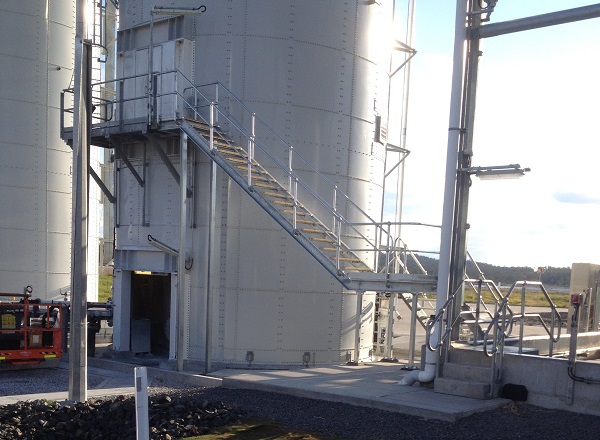
- Completed Stairway
Typical Plant Layout for the Syngineering MBR and MBBR Systems
Written on September 4, 2016
Syngineering have been hard at work developing a range of containerised Membrane Bio Reactors (MBR) and Moving Bed Bio Reactor (MBBR) systems suitable for treating a wide range of waste water that includes sewage treatment, land fill leachate, effluent treatment and many more. These systems are fully containerised and range in size from 10KL/day through to many mega litres per day. The advantage of the Syngineering systems are that they come standard with Reverse Osmosis or RO filtration meaning that they will produce permeate that complies with Australian and New Zealand drinking water guidelines.
Contact Syngineering for more information or to arrange an MBR or MBBR trial today
P: +61 7 3865 6603
W: www.syngineering.com.au
E: info@syngineering.com.au
Effluent Treatment by Syngineering
Written on September 4, 2016
Syngineering Water, Australian distributors of VSEP water treatment systems have been applying the VSEP to many different ways to improve waste water treatment. This application is treating effluent from an abattoir and producing water that complies to the Australian Drinking water guidelines
I know this is not the best topic and people do not want to talk about effluent, but unless innovative practical engineers and scientists like the team at Syngineering continue to develop ways to treat effluent, waste water and leachate then we will destroy ourselves.

Syngineering have been developing new and innovative methods of treating effluent and waste water by combining VSEP and reverse osmosis.
Click here for more details of the effluent trials
Contact Syngineering on
P: +61 7 3865 6603
W: www.syngineering.com.au
E: info@syngineering.com.au
Containerised Water Treatment Unit
Written on September 4, 2016
Published on Sep 4, 2016
Syngineering have been developing a new range of containerised VSEP units that fit inside a 40 foot shipping container. The systems also include a reverse osmosis option that when combined with the VSEP system, will produce water that complies with the Australian and New Zealand drinking water standards. These containerised systems are ideal for a wide range of applications including landfill leachate, effluent treatment, coal seam gas, drilling mud treatment and many more.
Click here for more details on the containersied systems
Contact Syngineering on
P: +61 7 3865 6603
W: www.syngineering.com.au
E: info@syngineering.com.au
Seismic Detector Installation – Another Innovative Design by Syngineering
Written on September 3, 2016
Another innovative design project from Syngineering that eliminates many of the manual handling issues associated with installing Seismic Detectors. Eliminates all of the manual digging and back issues not to mention potential snake bites as they walk through long grass. This innovative design was developed and manufactured in Queensland, Australia and comes complete with RPEQ certification.
Click Here for more information
Contact Syngineering for details and support for either your Seismic test program or eliminating manual handling issues
P: +61 7 3865 6603
W: www.syngineering.com.au
E: info@syngineering.com.au
VSEP Solves Landfill Leachate in Columbia
Written on March 1, 2016
The City of Buga in Colombia has a small landfill that serves the entire city. There was only a very small space left for putting trash and the projection was that it would run out of space in about 4 months. The Presidente Landfill asked authorities to open a new area on its property for trash disposal. The regulators told them that in order to give them a permit, they must install equipment to treat the landfill leachate. In addition, the existing storage ponds for leachate were nearly at capacity. Production of more Leachate would have required construction of more storage ponds.
A gas to energy project is also planned for this site. The first phase would be gas extraction with flares to burn the gas. The next phase would be installation of electrical gas-fired generators to make electricity. Prior to getting permitting for this project, leachate treatment was also required. While the trash in the landfill needs to be moist so that bacteria can convert organics to methane, there cannot be too much liquid (leachate) in the trash or the rate of gas extraction would be impaired.
Process Description
A full –scale VSEP system was installed at this site using three of the large 84” VSEP modules. Since the filtrate would be used for land irrigation, only a single pass with RO was required. Other VSEP installations would also include a second stage RO spiral polishing system to make water that would meet surface water discharge requirements. But in this case, Ammonia, COD, and other contaminants were sufficiently removed with just one pass through the VSEP RO system.
For more information click Syngineering – Buga Columbia Landfill Leachate
Syngineering Constructs Water Treatment Plant
Written on January 18, 2016
Syngineering have begun work on constructing another water treatment plant. A gloomy and cold day but a very exciting day for everyone involved with the project.
Keep up the great work as the project is now well ahead of plan.
Syngineering Completes Water Treatment Plant Design
Written on January 11, 2016
Well done to the Syngineering projects team who have completed and submitted the final water treatment plant design in record time. From contract to final design in a few short months, now for the Syngineering construction and commissioning team to take over and get the plant built.
Syngineering Secures Project to Recommission Power Station
Written on January 10, 2016
Congratulations to the Syngineering team for securing another new project. This project involves recommissioning a 3.2MW gas fired power station running Caterpillar 3600 gas fired engines.
This is another huge step forward for Syngineering and provides a platform for further growth and expansion.
Excellent job by everyone.
Syngineering Electrical Engineering Design Capabilities Boosted
Written on December 4, 2015
Syngineering has ramped up its electrical engineering design capabilities after hiring a highly experienced electrical engineer to assist us in delivering a large project in New Zealand.
This addition compliments our electrical installation and electrical drafting team greatly. It gives us presence and confidence when dealing with a variety of different electrical & control projects, including:
- Project management of control system projects
- PLC design
- SCADA
- DCS design
- Machine safety systems
- Safety instrumented systems
- Radio telemetry/RTU system design
- Routine plant maintenance
- Preventative maintenance
VSEP For Treating RO Reject
Written on March 16, 2015
Reverse Osmosis (RO) is an effective method for the treatment of a range of contaminated water. However for every litre of treated water you will have about a half litre of waste water or RO reject. When you are talking about treating volumes on the order of multiple megalitres a day then we are talking about a lot of RO reject water to deal with.
In many cases this RO reject is stored in holding ponds to evaporate. However with a VSEP system it is possible to continue to treat the RO reject water. The images below show the RO reject used as feed water input into the VSEP and the filtrate output from the VSEP.
| Before – RO Reject | After – Crystal Clear Filtrate | |
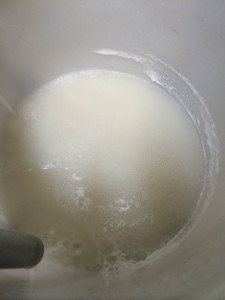 |
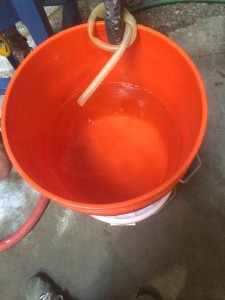 |
Lifting Device Certification
Written on February 5, 2015
We all know how difficult it is to find someone who can do the simple tasks we require effectively and affordable. Syngineering offers high quality engineering and drafting services across all areas in mechanical design, one of those areas is certifying lifting beams. We can design and/or certify your lifting beam, spreader beam and combination beam today.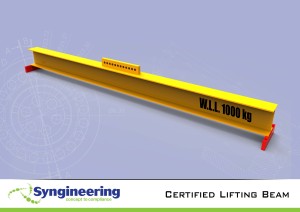
Electrical Drafters
Written on February 3, 2015
Many design jobs require electrical drafters with CAD skills in various software packages such as CATIA, Revit, AutoCAD or some other 2D drawing/3D CAD software.
The experienced drafters at Syngineering work with these CAD softwares on a daily basis. Our draftsmen come with tradesman experience, so they have worked on the tools and have the practical know-how when it comes to understanding what the client wants and doing the job properly. Continue reading “Electrical Drafters” »
VSEP Case Study – Virginia, USA
Written on February 3, 2015
A landfill in Virginia has implemented VSEP systems to prevent high surcharge costs for discharging leachate water in sewer systems. The leachate water contained higher levels of Biological Oxygen Demand (BOD) than acceptable and so incurred the surcharges. Before installing the VSEP system the landfill tried unsuccessfully to use a dissolved air filtration (DAF) unit to pre-treat the leachate and was unsuccessful. Continue reading “VSEP Case Study – Virginia, USA” »
VSEP Case Study – El Inga, Ecuador
Written on February 3, 2015
El Inga Landfill serves Quito in Ecuador. Here they have had a problem with leachate treatment for several years and concerns that the groundwater is contaminated. They implemented a MBR/digester system, but it was not able to provide the required discharge and so the leachate has had to remain in the ponds and evaporate naturally. Continue reading “VSEP Case Study – El Inga, Ecuador” »
VSEP Case Study – Cerro Patacon, Panama
Written on February 3, 2015
Cerro Patacon is the only official solid waste landfill for Panama City’s garbage. The site was storing the leachate in three large ponds, but this solution is not permanent, with an increasing population and pollution laws becoming stricter. Continue reading “VSEP Case Study – Cerro Patacon, Panama” »
VSEP Case Study – Santo Domingo, Ecuador
Written on February 3, 2015
The Santo Domingo Landfill caters to the third most populous city in Ecuador and therefore needs to hold a lot of waste. The climate is humid and rains frequently, which leads to high volumes of leachate. The current method for containing the leachate is using four large mesh-covered ponds, but is not an effective long term solution as the population increases and rainwater persistently fills up the ponds. Continue reading “VSEP Case Study – Santo Domingo, Ecuador” »
VSEP’s Membrane Technology
Written on February 3, 2015
VSEP systems use membranes which are made from various thin film composites and polymers such as polyether sulfone and polyamide. There are over 200 different membrane types being used throughout the VSEP systems. Continue reading “VSEP’s Membrane Technology” »

